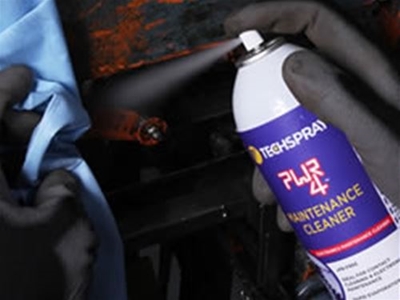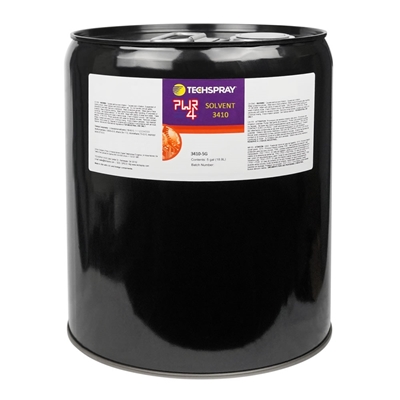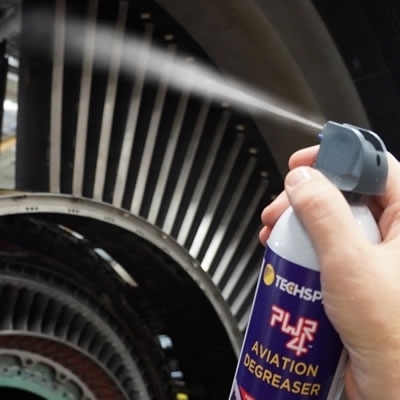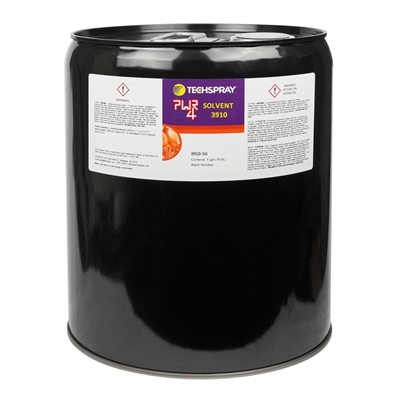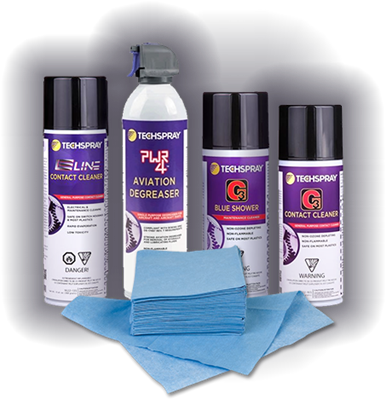by Dr. Saroj Yadav, Marketing Director and Organic Chemist
n-Propyl Bromide (nPB), Trichloroethylene (TCE), Perchloroethylene (Perc), and Methylene Chloride are four examples of harmful chemicals that are commonly used in aerosol and bulk cleaners in industrial applications. These chemicals are commonly used as cleaning solvents because they are non-flammable, have high solvency, and are relatively inexpensive.
The lack of toxicity knowledge and control can lead to employee ill health, downtime, and potential liability, no matter what the legal standing of a particular chemical. The onus is on the organizations using solvents to select products carefully, and equip the users to safely handle the chemicals.
n-Propyl Bromide (nPB)
In the report “Nontechnical Summary of the Risk Evaluation for 1-Bromopropane (n-Propyl Bromide)”[1], the US Environmental Protection Agency (EPA) determined that the solvent “presents an unreasonable risk for 16 conditions of use.” Some of those conditions of use include industrial and consumer use for cleaning and degreasing, vapor degreasers – open-top and inline, cold cleaners, aerosol spray degreaser/cleaner, and automotive degreasers -- i.e. for engines, brakes.
This is the most direct, unambiguous statement against nPB from any national US regulatory agency to date, suggesting the sunset of its availability for degreasing is quickly approaching.
| nPB |
|---|
| CAS# 106-94-5 |
| aka n-Propyl bromide 1-Bromopropane Bromopropane Propyl bromide |
| Toxicity / TLV: 0.1 ppm |
| Neurological effects, multiple reproductive effects (male & female) |
| EPA aerosol ban proposed |
| Restricted in California |
Trichloroethylene (TCE)
In the “Final Risk Evaluation for Trichloroethylene”[2] published January 2023, the EPA released its final risk determination that “TCE presents an unreasonable risk of injury to health under its conditions of use”.
EPA assessed the impact of TCE on workers, occupational non-users, consumers, and bystanders. It has raised the concern that OSHA’s Permissible Exposure Limits are “outdated and inadequate”, so PPE and engineering controls may not be enough.
| TCE |
|---|
| CAS# 79-01-6 |
| aka Trichloroethylene Acetylene trichloride Ethinyl trichloride Ethylene Trichloride |
| Toxicity / TLV: 10 ppm |
| Liver, kidney or lung cancer |
| Restricted in California |
Perchloroethylene (Perc)
In “Perchloroethylene Draft Revised Unreasonable Risk Determination for Public Comment”, the EPA concluded that it “presents an unreasonable risk for sixty(60) conditions of use”[3], including domestic manufacture or import, industrial and commercial use for vapor degreasing, and processing into cleaning and degreasing products.
More recently, the agency released a regulatory agenda, which outlines plans to propose a final risk management rule for PERC by August 2024.
| Perc |
|---|
| CAS# 127-18-4 |
| aka Perchloroethylene Ethylene tetrachloride Tetrachloroethylene Carbon bichloride Carbon dichloride |
| Toxicity / TLV: 25 ppm |
| Liver damage, altered renal function |
| Restricted in California |
Methylene Chloride
In March 2019, the EPA issued a final rule that effectively banned the consumer sales of methylene chloride-based paint strippers for use in residential settings. The agency found that numerous deaths had occurred due to exposure to these products, often in poorly ventilated areas.[4]
In May 2023, the EPA proposed workplace protection under the Toxic Substances Control Act (TSCA) which includes prohibition of manufacturing, processing and distribution for all consumer uses, ban on most industrial and commercial uses, strict workplace protections and reporting.[5]
| Methylene Chloride |
|---|
| CAS# 75-09-2 |
| aka Dichloromethane, methylene bichloride |
| Toxicity / TLV: 25 ppm |
| Liver, kidney, lung, pancreas and lung cancer |
| Restricted in California |
Hazardous Air Pollutants (HAPs)
Hazardous Air Pollutants (HAPs) are well-known chemicals that can induce cancer, as well as other major health issues such as birth defects or reproductive problems. To reduce emissions, EPA established a national monitoring strategy, through The Clean Air Act (CAA), to regulate toxic air pollutants, and mitigate exposure to health-damaging hazards.
One of the main tools The United States Environmental Protection Agency (EPA) employs to guarantee that regulated populations comply with environmental laws is compliance monitoring. It includes any regulatory agency actions taken to check if a facility (or collection of facilities, such as locations connected geographically, by industry, or by corporate structure) follows the policy in question.
Infractions may also be found through the Environmental Violation Reports that the Agency receives from the general public. Any of these activities that uncover violations may result in civil or criminal enforcement[6].
Safer High Precision Cleaning Solvents
PWR-4™ Cleaners are ideal where a safer, nonflammable, and cost effective cleaner is required. This innovative solvent is much safer than the four most common industrial solvents: TCE, nPB, Perc and Methylene Chloride and quickly cleans the most difficult greases and oils from electronics, relays, and motors. PWR-4 solvents are engineered to remain stable and effective over thousands of cycles in vapor degreasing equipment.
PWR-4 Cleaners remove oils, greases, silicones, refrigerant oils, fluxes, adhesives and other common industrial contaminants. Used for aerospace applications, aviation MRO, cleaning medical instruments, implants and other devices including orthopedic implants, and monitoring devices.
Techspray’s TechLab offers state-of-the-art cleaning, coating and analytical services to help customers qualify new products and optimize their processes. Cleaning equipment includes inline, batch, ultrasonic, and vapor degreasing systems. This equipment allows us to better duplicate your production environment for process optimization and troubleshooting.
Contact Techspray at 678-819-1408 or info@itwcce.com for free TechLab qualification testing. We are available to help qualify new cleaning processes, evaluate current processes, or troubleshoot contamination issues.
About the author: Dr. Saroj Yadav is Marketing Director for Techspray, and previously Director of Product Technology. She has a PhD in Organic Chemistry from Louisiana State University, and has been published in several chemistry journals including Tetrahedron and The Journal of Organic Chemistry.
References
[1] EPA, “Nontechnical Summary of the Risk Evaluation for 1-Bromopropane (n-Propyl Bromide)”, Aug. 2020 - https://www.epa.gov/sites/production/files/2020-08/documents/1-bromopropane_final_risk_evaluation_nontech_summary_1bp_73020_v3.pdf (accessed 8/25/23)
[2] EPA, “Perchloroethylene - Draft for public comment“, June 2022 - https://www.epa.gov/system/files/documents/2022-06/PCE_127-18-4_Risk%20Determination_06-24-2022-revised-clean.pdf (accessed 7/10/22)
[3] EPA, “Final Risk Evaluation for Trichloroethylene”, rev. June 2023, https://www.epa.gov/compliance/how-we-monitor-compliance#inspection (accessed: 10/10/22).
[4] EPA, “Final Rule on Regulation of Methylene Chloride in Paint and Coating Removal for Consumer Use”, rev. June 2023, https://www.epa.gov/assessing-and-managing-chemicals-under-tsca/final-rule-regulation-methylene-chloride-paint-and (accessed: 8/29/23)
[5] EPA, “Risk Management for Methylene Chloride”, rev. June 2023, https://www.epa.gov/assessing-and-managing-chemicals-under-tsca/risk-management-methylene-chloride# (accessed 8/29/23)
[6] EPA, “How We Monitor Compliance”, rev. June 2023, https://www.epa.gov/compliance/how-we-monitor-compliance#inspection (accessed: 8/25/23).


